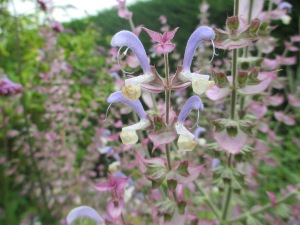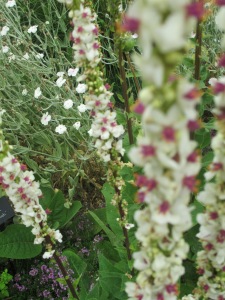Situated in the not-so-pretty village of Elmstead Market, between the Essex towns of Colchester and Clacton, Beth Chatto’s marvellous garden is a great day out. The gravel garden alone, which is just a part of what is on offer, is a morning’s entertainment in itself.
Beth, now aged 90, began the garden with her husband in 1960. They owned a fruit farm nearby and started the garden on what they called “wasteland”. Beth was a flower arranger and speaker at that point and began with an interest in unusual plants. She built up a collection which led to the nursery in 1967 and then began writing books, including The Dry Garden, The Damp Garden, Plant Portraits and The Green Tapestry.
The gravel garden is not irrigated; indeed Beth says that the original idea was an experiment to see what can be done on an unpromising former car park. Miraculously, you don’t even need to pay to go into the gravel garden, whereas there is an entry fee for the lush water and shade gardens. The tempting and well-stocked nursery is also free to visit and there is a reasonable café which offers meals and cakes.
In July, the gravel garden looks almost like an Australian landscape with the dominant Eucalyptus tree and waving grasses. It was a windy day the movement of the trees and the flowering grasses was magnificent. But there are many plants flowering away, not least the Mount Etna broom (Genista aetnensis) with its scented yellow pea flowers reaching up to 4m above the ground. Other highlights are the tree poppy (Romneya coulteri), standing up to 1.5m high with its large white blooms and the yellow centres, so attractive to hover flies:

But the garden is a lesson in the variety of different plants all in flower: the grasses, the salvias, thymes, oreganos, the yuccas, the mulleins, hollyhocks and umbellifers. Among the grasses I was particularly impressed by Stipa gigantea and more unusually Stipa barbata which has wispy spikes which were fluttering in the breeze, and furry Stipa tenuissima.
Another genus well represented is Sedum: the dramatic ‘Dragon’s blood’, the dark ‘Bertram Anderson’ and the tall ‘Purple Emperor’.
The variety of the plants that do well in the garden is immense. I love the giant yellow-flowered umbellifer Ferula communis and Beth even has an unusual Ferula tingitana ‘Cedric Morris’ which has fat seed heads.
To pick out just a few more favourites, I would chose the lovely Verbascum chaixii ‘Album’, and the gorgeous furry rosettes of the big verbascums, probably V. bombyciferum, now developing where they have seeded.
Two more glories are Onopordum acanthium – the so called Scottish thistle, a lovely big glaucous blue plant with the characteristic mauve flowers, and a subtley beautiful sage Salvia sclarea var turkestanica, which forms tall stands in the garden.














